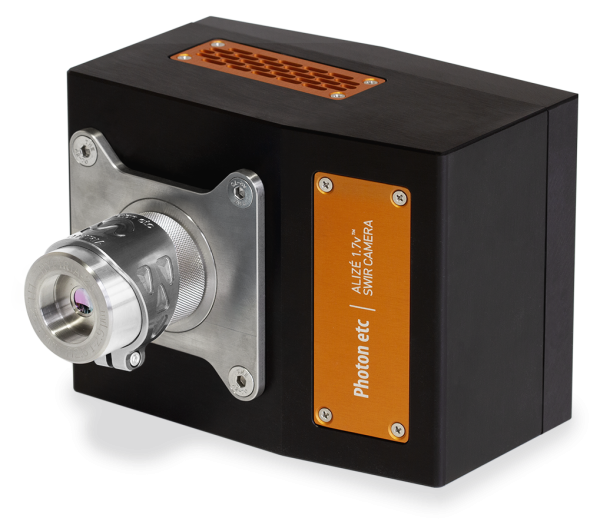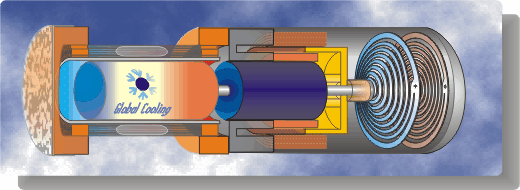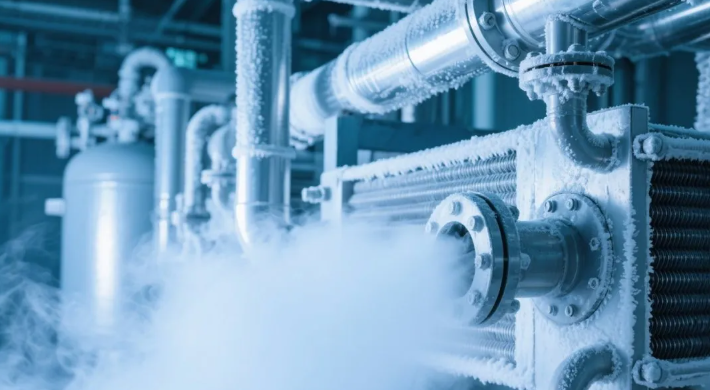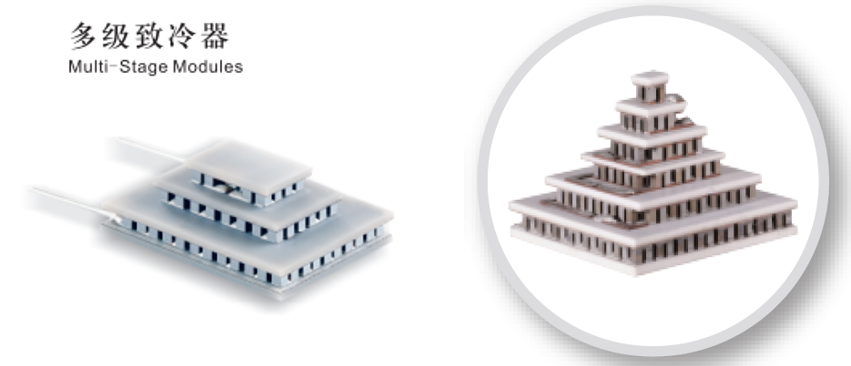High temperature challenges the performance of infrared cameras? Let thermoelectric cooler control the temperature!
With the rapid development of science and technology, infrared cameras, as devices that can capture infrared radiation from objects and convert them into visual images, have been widely used in security monitoring, industrial inspection, biomedicine, astronomical observation and other fields.
1.Why is it necessary to perform precise temperature control on infrared cameras?
For infrared cameras (especially those working in the short-wave infrared region), the image quality is easily affected by the "dark current". The dark current of the detector in the camera, such as the common InGaAs sensor, increases sharply with the increase of temperature.
Studies have shown that for every 10°C increase in temperature, dark current* will increase by about 3 times. The increase in dark current will greatly reduce the sensitivity of the camera sensor and severely compress the dynamic range of the camera, resulting in blurred image details and low signal-to-noise ratio, making it difficult to meet the needs of high-quality imaging in high-tech fields such as scientific research and industry.
In order to ensure the sensitivity and high-definition imaging of infrared cameras, precise temperature control is necessary. Among all available temperature control technologies, thermoelectric cooling solution is gradually becoming the mainstream solution for infrared camera temperature management due to its compact structure, high-precision temperature control, and low-noise operation.
Dark Current: The electrical signal generated by the sensor even when there is no light.
2. Application of TEC technology in infrared cameras
Thermoelectric cooling technology uses the Peltier effect to cool infrared cameras. First, a TEC module is placed in the infrared imaging device to form a "cold" side and a "hot" side, and then the temperature of the "hot" side is transferred to the heat dissipation fins through the heat conduction base and heat pipe. This can effectively reduce the internal temperature of the camera, maintain wavelength stability, eliminate the influence of dark current, and enable the camera to maintain clear imaging at extremely high/low temperatures.

Classic application case - Alize1.7 near-infrared camera
Canadian company Photon etc. specializes in the research, development and manufacture of hyperspectral and infrared imaging systems. Below is a typical temperature control case of one of its near-infrared cameras, Alize1.7.
Adopt four-stage thermoelectric cooling (TE4) air cooling system
● Internally integrated four-stage TEC module and electronic controller
● The temperature is stabilized at -50°C by TEC temperature control technology
● With four-stage thermoelectric cooling (TE4) technology, this infrared camera can work stably in a low-temperature
environment of -50°C and produce high-quality images in the spectral range of 500-1700 nanometers. Its maximum frame rate reaches 190 frames per second, with excellent dynamic capture capabilities; at the same time, it has an extremely high signal-to-noise ratio, which can clearly restore weak light flux signals, significantly improving imaging quality and system stability.
3. Thermoelectric cooling Solutions VS Other Refrigeration Solutions
In the infrared camera temperature management solution, in addition to the thermoelectric cooling solution, there are also common Stirling cooler refrigeration and liquid nitrogen cooling solutions. Let's take a brief look at the principles and characteristics of these two solutions.
● Stirling cooling solution

A Stirling cooler is an electrically driven refrigerator that uses the principle of adiabatic expansion* to achieve cooling. Its advantage is that it is small in size, but it is noisy during operation and has a short lifespan, which may have a certain impact on the stability and portability of the camera. In contrast, thermoelectric cooling is quieter, has a longer lifespan, and has higher temperature control accuracy, showing stronger adaptability and comprehensive performance in the application of infrared cameras.
Adiabatic expansion refrigeration: A refrigeration technology based on the principles of thermodynamics. It lowers the temperature by the expansion process of high-pressure gas in an adiabatic environment, and uses the reheating (or heat absorption) process of the expanded gas in a low-pressure state to achieve continuous refrigeration.
● Liquid nitrogen cooling solution

Liquid nitrogen cooling uses the characteristic of absorbing a large amount of heat when liquid nitrogen vaporizes to achieve refrigeration. It can cool the ambient temperature to -147°C with high refrigeration efficiency. However, liquid nitrogen needs to be added frequently during the liquid nitrogen cooling process, and special personnel are required to operate it. The requirements for the use environment and personnel capabilities are very strict. In contrast, thermoelectric cooling is easy to maintain, does not require special personnel to assist, has a low threshold for use, and is more in line with actual application needs.
4. Pioneer Thermoelectric achieves deep cooling of TEC
Although Stirling and liquid nitrogen cooling have higher refrigeration efficiency, their applications are limited by problems such as high noise and complex maintenance. How to improve refrigeration efficiency without relying on external media has become a key issue to be solved in the temperature control of infrared cameras. It is this demand that has driven the development of multi-stage TEC.
At a hot surface temperature of 50°C, a single-stage TEC can reduce the temperature by 70-80°C. In order to improve the cooling efficiency, we connect the single-stage TEC into multiple-stage TECs - for example: the first stage reduces the temperature by 60°C, and the second stage reduces the temperature by another 40°C, and a total temperature difference of 100°C can be achieved.

Advanced TE provides double-layer, triple-layer, and other TECs of various levels for customers to choose from. The products support customized design to meet the cooling needs of different customers. Among them, the maximum cooling temperature difference of the six-level TEC product exceeds 140°C, and the cold end temperature reaches -90°C, which can fully realize deep cooling.



